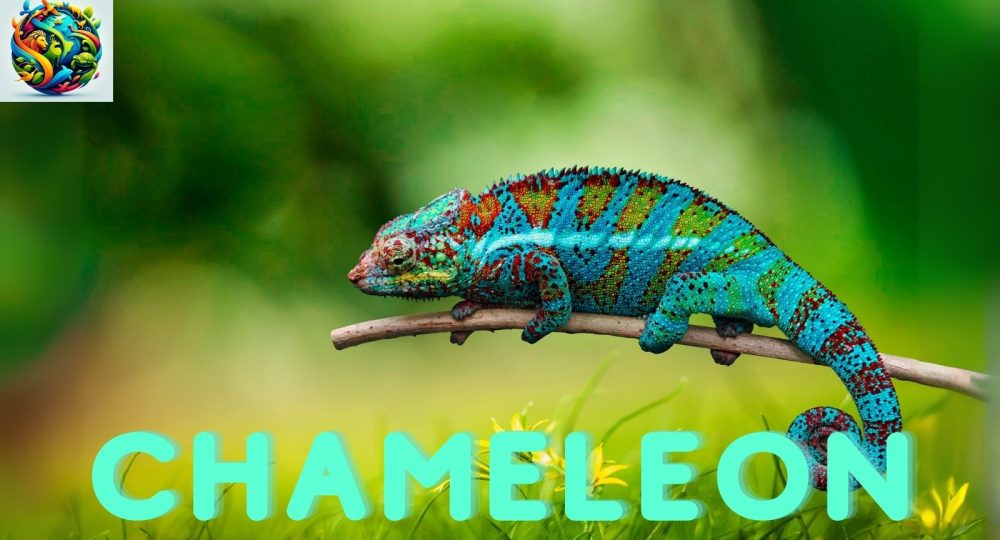Chameleon: Masters of Camouflage and Adaptation
In the lush jungles and arid deserts of the world, a mesmerizing creature thrives, known for its remarkable ability to blend seamlessly into its surroundings: the chameleon. With its unique appearance, specialized anatomy, and unparalleled camouflage skills, the chameleon embodies nature’s ingenuity and adaptability. Join us as we embark on a journey into the captivating world of chameleons, unraveling the secrets of their camouflage, behavior, and evolutionary success.
Amazing Fact:
One of the most astonishing facts about chameleons is their independent eye movement. Each eye can rotate and focus independently of the other, allowing chameleons to simultaneously scan their surroundings for prey and predators with unparalleled precision—a trait that sets them apart from most other vertebrates.
Habitat/Food:
Chameleons are predominantly found in tropical and subtropical regions, ranging from rainforests and savannas to deserts and mountainous areas. They are carnivorous reptiles, feeding primarily on insects, spiders, and other small invertebrates that they capture using their lightning-fast tongues.
Appearance:
Chameleons are instantly recognizable for their unique appearance, characterized by their elongated bodies, prehensile tails, and distinctive casque-like heads. They possess specialized feet with fused toes and sharp claws, ideal for gripping branches and climbing in their arboreal habitats. Their most striking feature is their ability to change color, a trait used for communication, thermoregulation, and camouflage.
Types/Subspecies:
- Veiled Chamileon
- Panther Chamileon
- Jackson’s Chamileon
- Fischer’s Chamileon
- Parson’s Chamileon
- Pygmy Chamileon
Location:
Chameleons are native to Africa, Madagascar, southern Europe, and parts of Asia and the Middle East, where they inhabit a diverse range of ecosystems. Some species have also been introduced to other regions as exotic pets or for biological control of pest insects.
Predator & Threat:
While they possess several adaptations for defense, including their camouflage, projectile tongues, and ability to inflate their bodies, they still face threats from predators such as Birds, Snakes, and mammals. Habitat loss, deforestation, and the illegal pet trade also pose significant threats to chameleon populations worldwide.
Mating:
Mating rituals among them vary depending on the species, but typically involve elaborate displays of coloration, body postures, and vocalizations by males to attract females. Once courtship is successful, females lay eggs in soil or vegetation, which hatch into miniature versions of the adults after an incubation period.
How They Communicate:
They use a variety of visual signals and body language to communicate with conspecifics and navigate their environment. Color changes play a crucial role in communication, with chameleons displaying bright hues during courtship, aggression, and territorial disputes. They also use head bobs, throat extensions, and tail movements to convey messages to other chameleons.
Movies on Chameleons:
While they may not be as prominently featured in mainstream movies as other animals, they have occasionally appeared in documentaries and nature films highlighting their unique adaptations and behaviors. Documentaries such as “Planet Earth” and “Life in Cold Blood” offer captivating glimpses into the lives of chameleons in their natural habitats.
How It Is Pronounced in Different Languages:
- English: Chamelión
- Spanish: Camaleón
- French: Caméléon
- German: Chamälion
- Mandarin Chinese: 变色龙 (Biàn sè lóng)
- Hindi: चेमेलियन (Chemeliyan)







